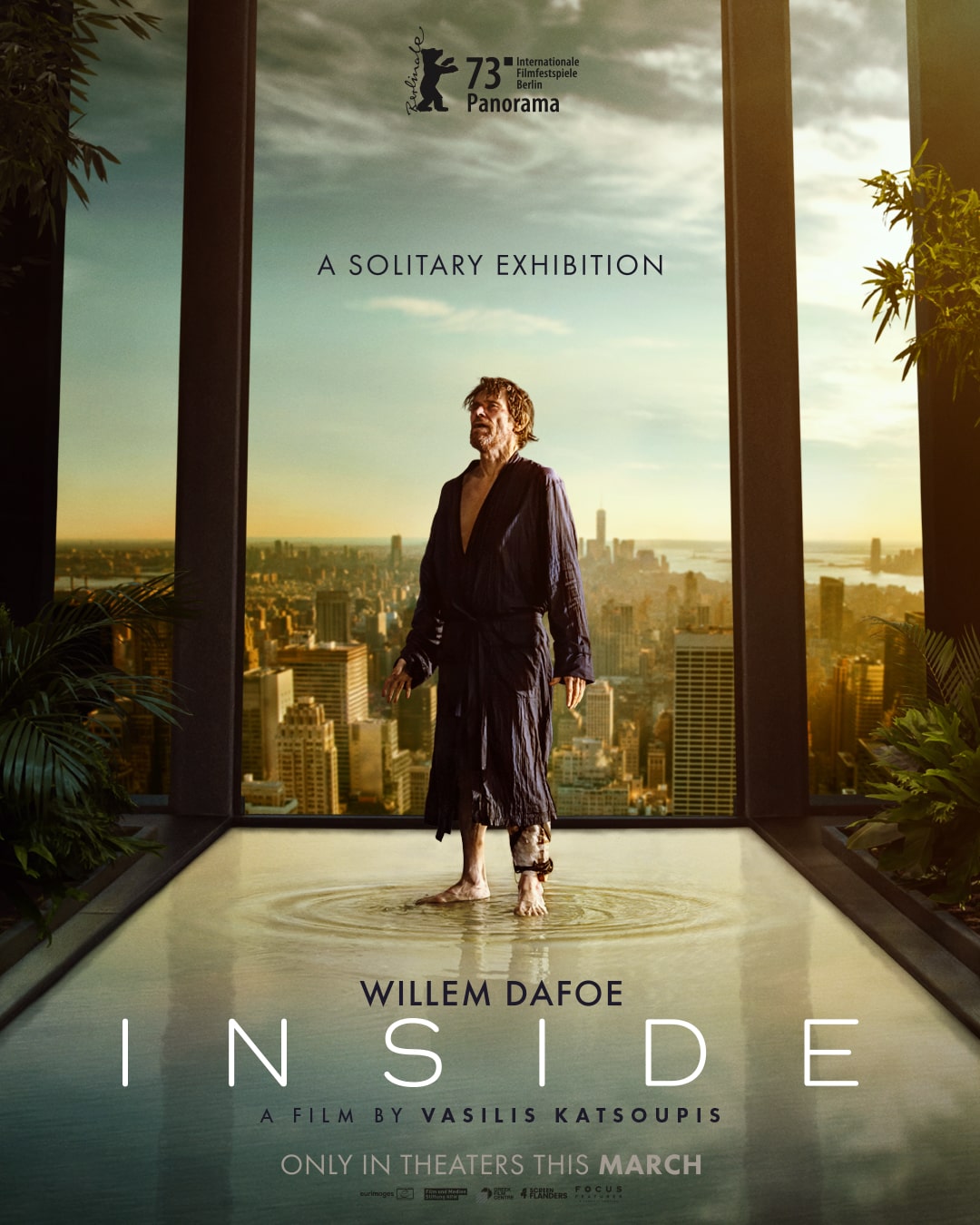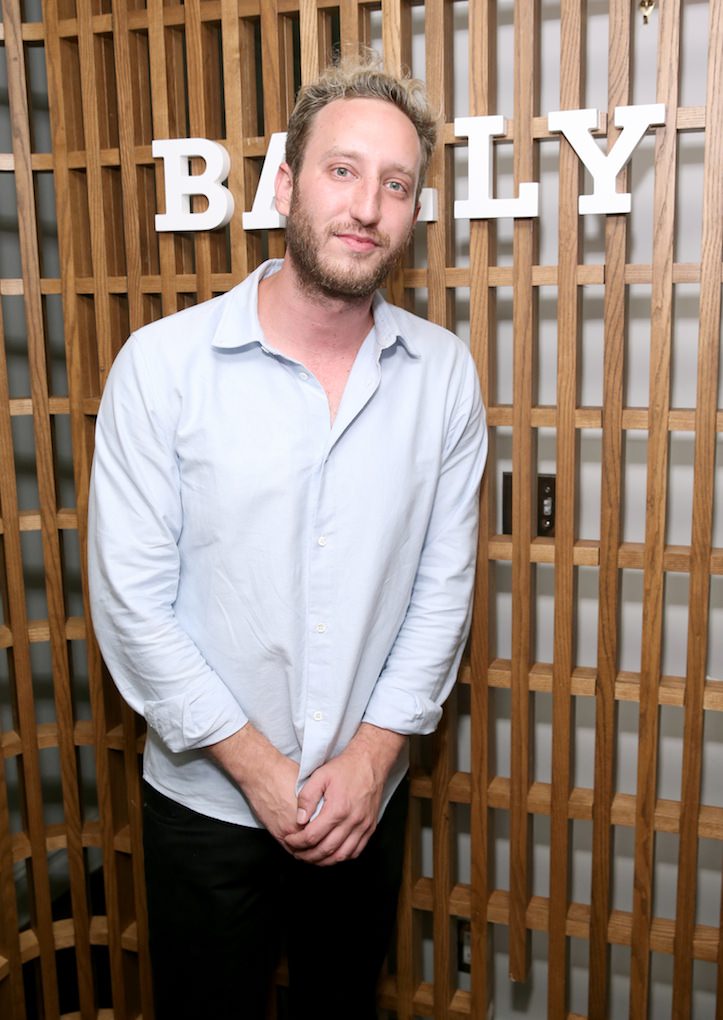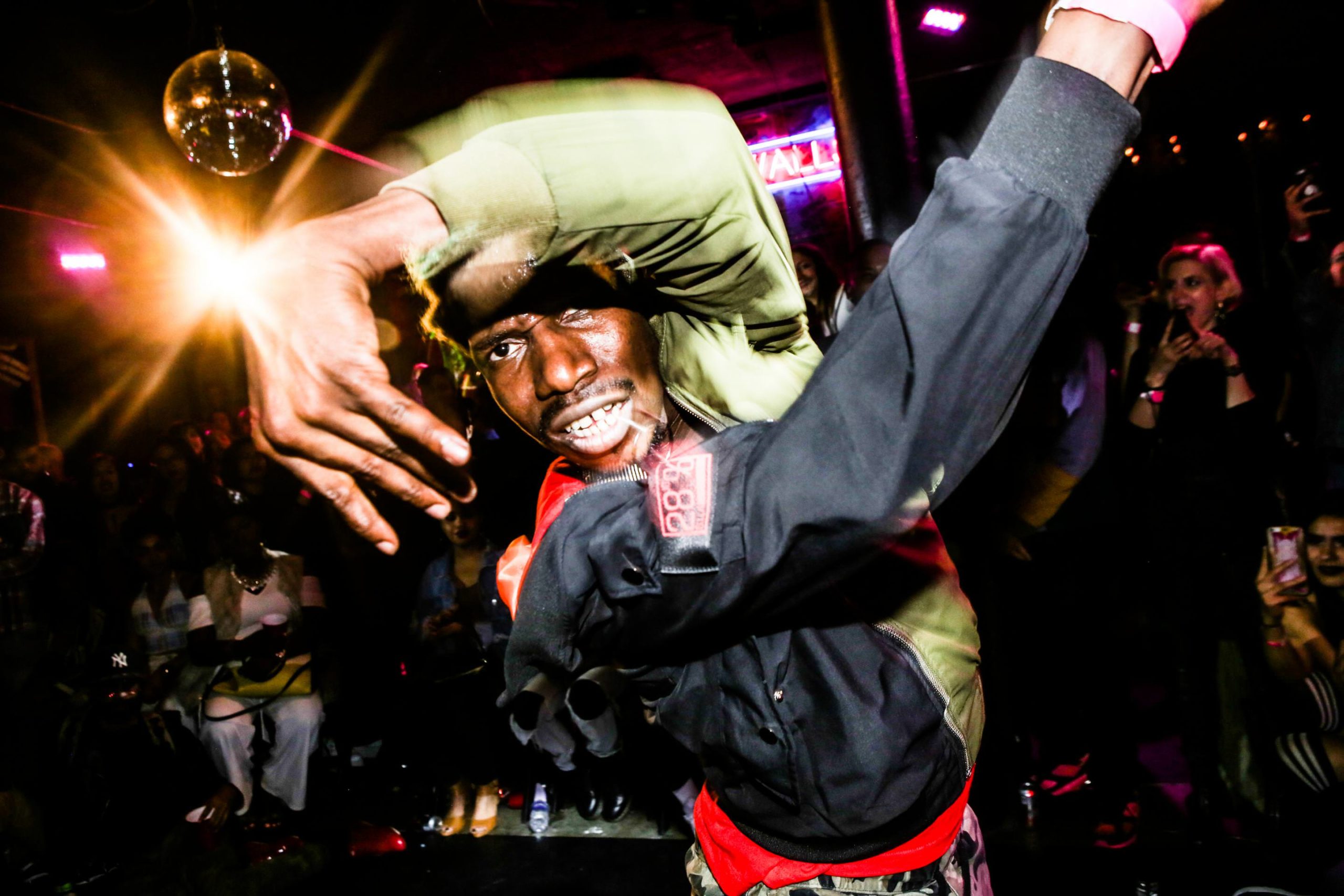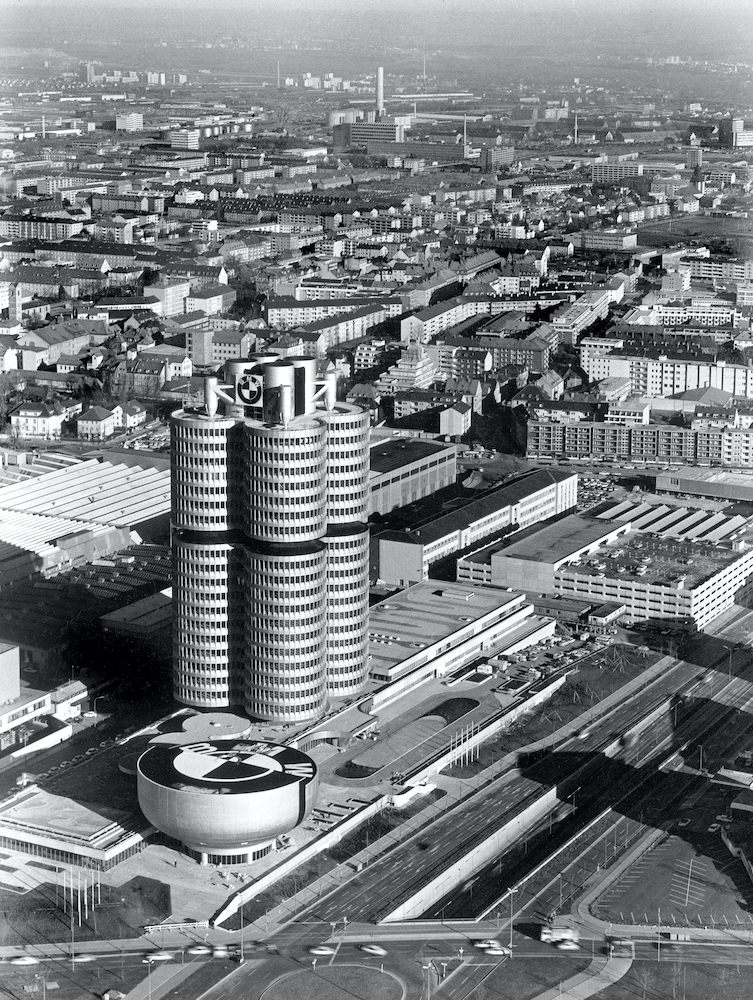On March 10, Focus Features released Inside, a suspenseful film about an art thief named Nemo (played by Willem Dafoe) trapped inside the penthouse apartment of an art collector in a robbery gone awry. Over the course of the movie, the plot takes a downward twist from an expertly-planned heist into a tale of imprisonment and survival, where Dafoe’s character must fight to gain entry to locked spaces in order to find the resources to survive. His only company during these months of entrapment? An exquisite collection of art.
Inside was directed by Vasilis Katsoupis with producer Giorgos Karnavas and screenplay by Ben Hopkins. Once in development, with the leading (and only) actor in place, it became clear that the next priority had to be the art, being Nemo’s only counterpart in his lavish prison—acting as a representation of the elusive collector. Throughout the film, Nemo interacts with the art, even demolishing some works as a means of survival.
Bringing to life Katsoupis’s specific vision was no simple task. It demanded knowledge of contemporary and classical art, and the curatorial perspective required of a virtual exhibition. This crucial facet was entrusted to the curator and art director Leonardo Bigazzi, who had proven his capability in a previous project with Karnavas, working on the film Kala azar in 2020. “It was a project within a project,” Karnavas said. “And we really knew we had to approach it very seriously, in an academic way, and go for something spectacular.”
The curatorial proposal envisioned by Bigazzi was an ambitious one. Encompassing 38 works across mediums like sculpture, painting, video, drawings, installation, and photography, the concept included proposals and commissions involving artists like Francesco Clemente, Albrecht Fuchs, and Stefanos Rokos, and a selection of esteemed works like those by Maurizio Cattelan, or a neon from John Armleder that are known to be owned by private collections—making the story all the more believable. Curious about the film and his curatorial approach, Whitewall spoke with Bigazzi to learn more.
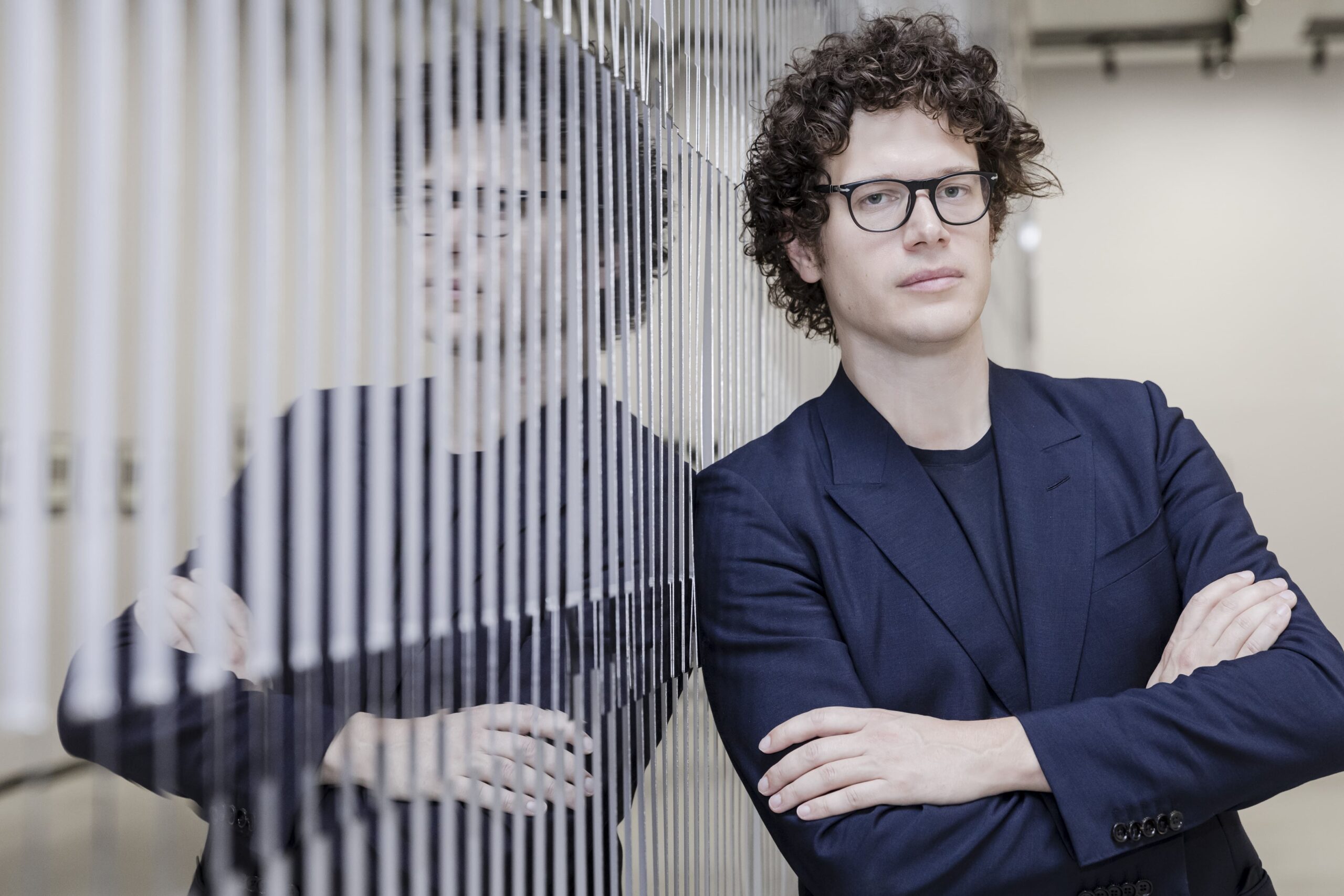
Portrait of Leonardo Bigazzi.
WHITEWALL: Tell us about the curatorial process for Inside and what kind of work we’ll see in the film.
LEONARDO BIGAZZI: When I was approached by the producer of Inside, Giorgos Karnavas, and the director, Vasilis Katsoupis, it was already clear from the script that art had the role of co-protagonist in the film. It was therefore not only a matter of imagining a coherent and realistic collection but also, and this was the most exciting and challenging part, of contributing to the narrative structure of the film through the selection of the artworks. In dialogue with Vasilis and Giorgos, I started from the script, and from a series of real references, such as the houses of collectors I have visited over the past years.
Some are original, others, because they had to be destroyed or damaged during filming, are replicas often made by the artists themselves. From the beginning, I imagined treating the curatorship for the movie as if it were a real exhibition, exploring the generative potential of the encounter between contemporary art and cinema. Therefore, despite the tight production schedule, I proposed to commission six works for the film. These included, for example, the wonderful watercolor by Francesco Clemente, or the sculptures by Petrit Halilaj, Rayyane Tabet, and Alvaro Urbano.
It was also important that the works would fit organically into the stunning set that Vasilis had conceived together with production designer Thorsten Sabel. With each of the 25 invited artists, or their estates, there was an in-depth dialogue about how the works would be displayed on the set and their role in the narrative structure of the film. One of the most complex aspects was convincing the artists to lend their works as part of a creative vision over which they had no control. On their part, it was an act of great generosity and trust that should by no means be taken for granted.
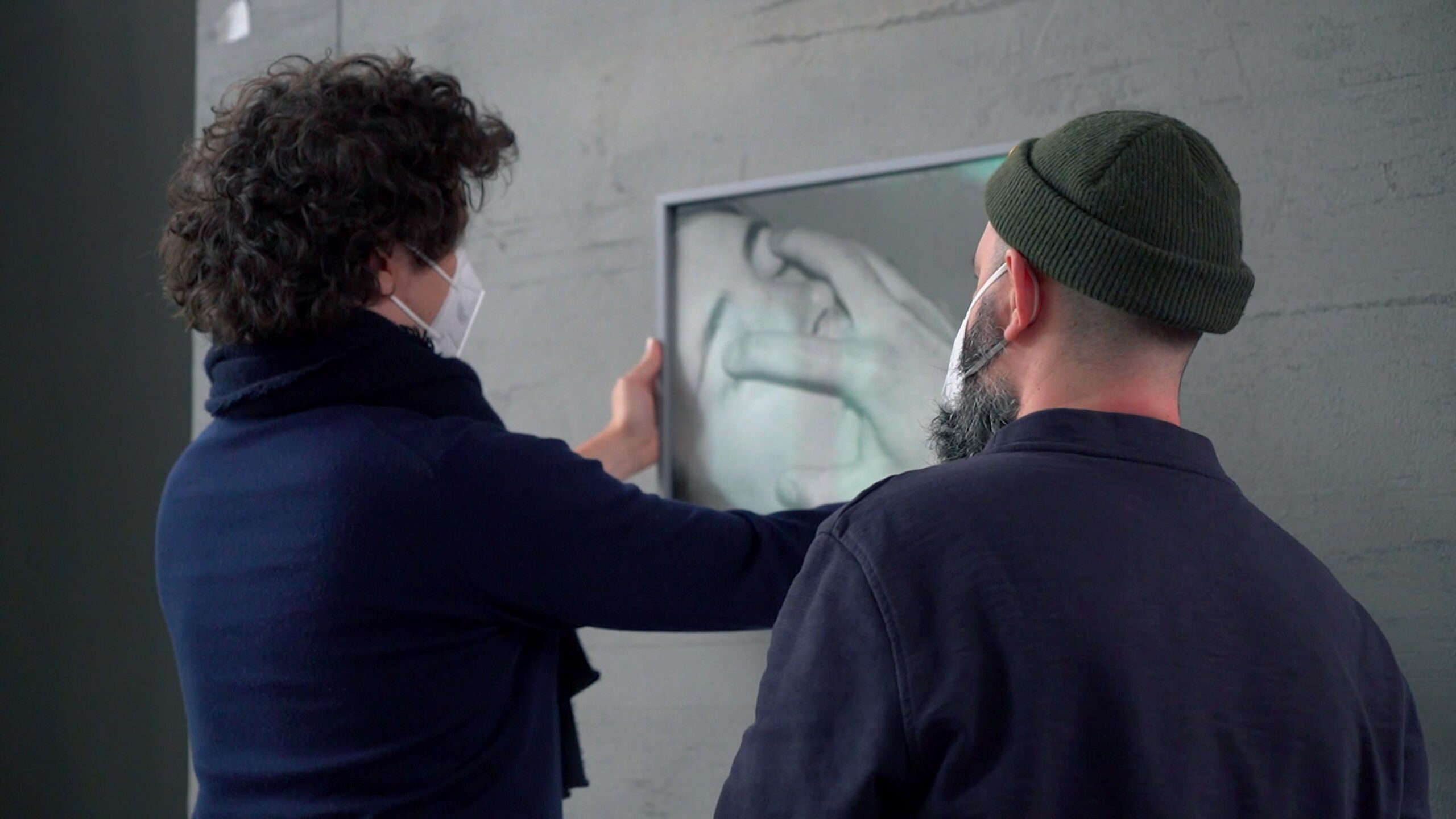
Art curator Leonardo Bigazzi (left) places Johanna Piotrowska’s ‘Untitled’, 2014, with director Vasilis Katsoupis (right) on the set of “INSIDE,” a Focus Features release; courtesy of Focus Features.
WW: What kind of presence were you searching to create with your curation? Would you say the work you selected affected the mood of the film or the story itself or was the work solely chosen for the mood and the story?
LB: A private art collection is always a direct expression of the person who put it together. It reveals his personality, his passions, loves, encounters, and, very often, his obsessions. Imagining this collection, therefore, was like giving shape to the character of the owner of the house where Nemo remains trapped. An invisible antagonist whose presence became tangible through art.
As a famous architect, his collection had to express a cultured and sophisticated taste, combining an interest in abstract art with works with strong political themes. However, the penthouse had to also show a certain ostentation of wealth, against which, during the film, the protagonist’s fury is unleashed.
Vasilis, who has an academic background in art, had a clear vision of how the works had to be in continuous dialogue with the protagonist, both on a physical and symbolic level. In a film with very little dialogue, the collection represented an unmissable opportunity to create a subtext of references to communicate with the viewer.
The script inspired many of the curatorial choices, such as Joanna Piotrowska’s photographs from the Frantic series (2016-2019), where the artist portrays friends and acquaintances whom she has asked to build shelters out of objects found inside their homes. Parts of the screenplay were rewritten after the selection of the works, and some of the scenes arose from on-set discussions with Willem and the director. This is the case of the dialogue with Maurizio Cattelan’s photography, whose subject is “liberated” by Nemo by detaching the work from the wall, or Petrit Halilaj’s moth sculpture, which is worn by the protagonist to protect himself from the cold in the apartment.
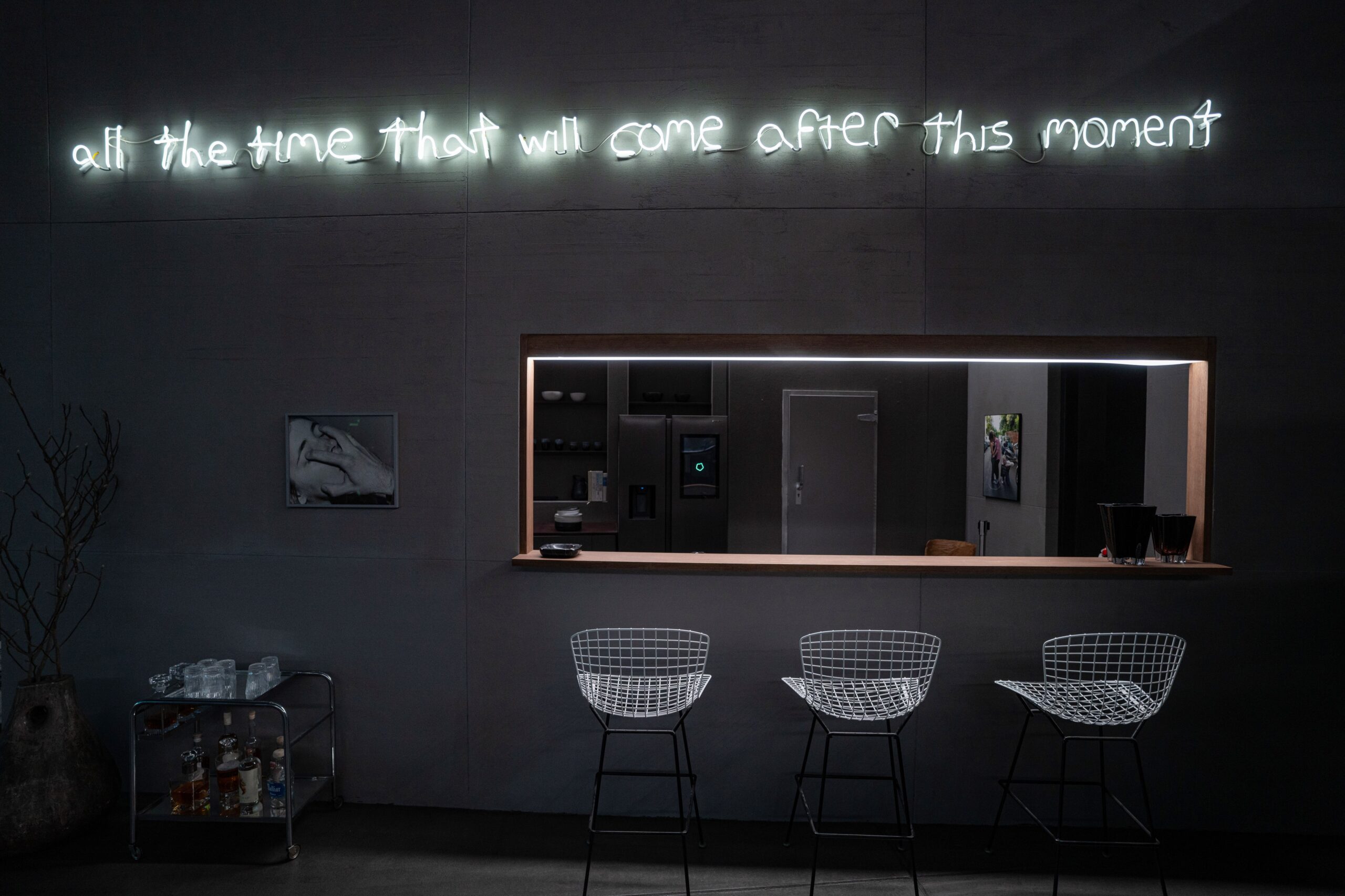
Willem Dafoe stars as Nemo in director Vasilis Katsoupis’s “INSIDE,” a Focus Features release; courtesy of Wolfgang Ennenbach / Focus Features.
WW: One of the focal points of the curation process was to make the art selection top-tier for viewers within the art world, but also accessible to the general population. What steps did you take to ensure that all viewers could appreciate and follow the story in terms of the art?
LB: It was essential to think of artistic references that, at least in part, would be accessible to everyone. This is why we thought of including historicized works, such as those by Egon Schiele, whose value both artistically and economically is well known. This choice may seem inconsistent with a collection exclusively of contemporary art. But it’s not the case, in my opinion.
On a visual level, I believe that a first level of interpretation of the symbolic meanings of certain works—particularly the video and photographic ones—and the correspondences they find in the narrative structure of the film, is quite immediate. Obviously, the more you know, the more connections and levels you are able to access. We can cite, for example, the sense of suspension given by a plane that never arrives in Adrian Paci’s work, the impossible dialogue of the couple divided by the two video screens in Breda Beban, or the dynamics of power and control that operate the puppet in Masbedo’s video work.
After two years of pandemic, we have all redefined the relationship we have with the objects in our homes, no matter how valuable they are. I don’t think you need an art history degree to perceive the sense of alienation and isolation reflected in some of the works in the film. In general, I always trust the audience, and I think they can understand a lot more than we think.
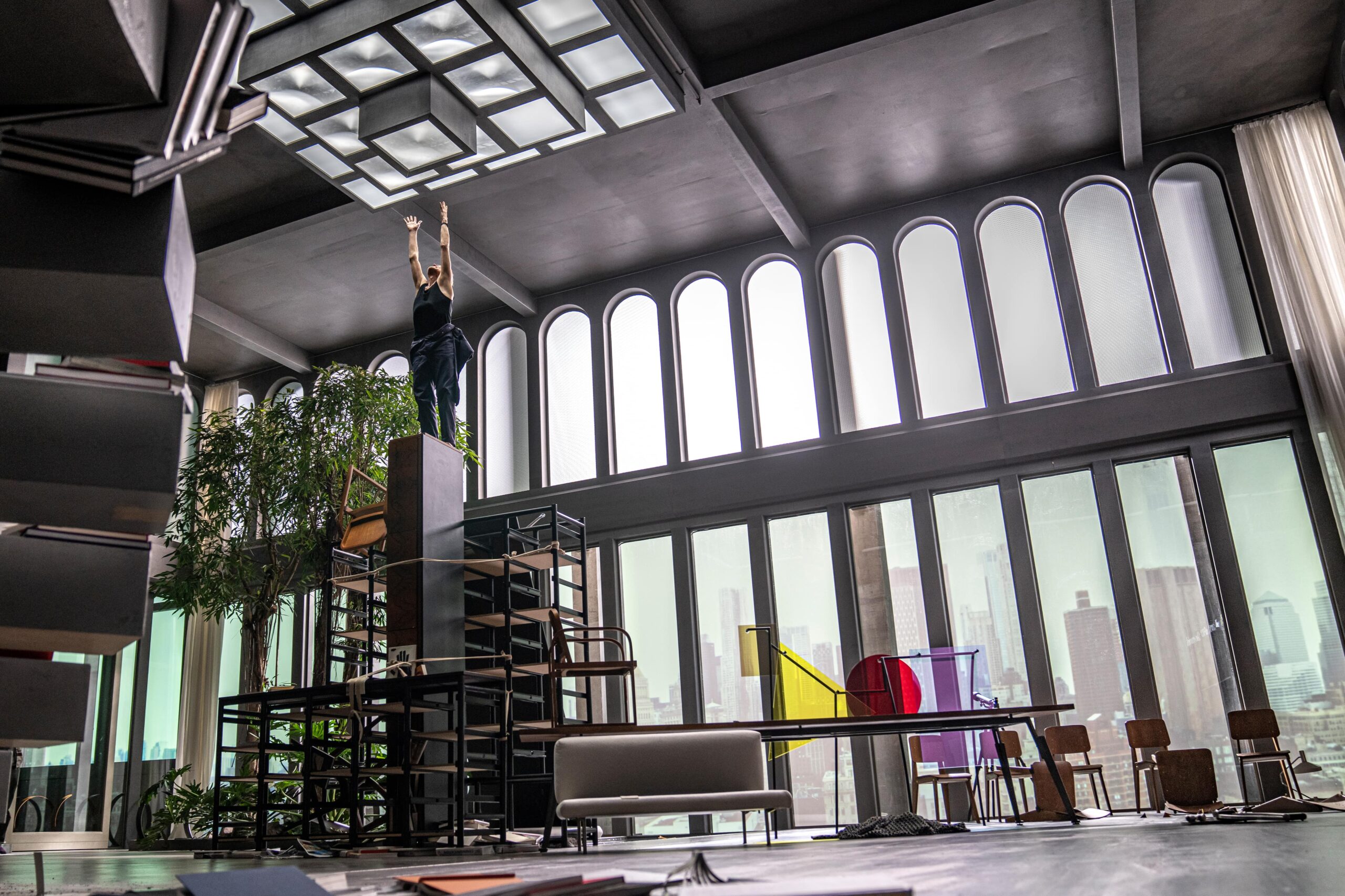
Willem Dafoe stars as Nemo in director Vasilis Katsoupis’s “INSIDE,” a Focus Features release; courtesy of Wolfgang Ennenbach / Focus Features.
WW: You curate both exhibitions and film programs, so this isn’t a new area of focus for you. Does your approach differ for a film project versus a static exhibition? Was it the same during the process of Inside, which could be likened to a film about an exhibition?
LB: Working between mediums has been part of my curatorial practice since I started and, as curator of the Fondazione In Between Art Film and the Festival Lo schermo dell’arte, I work precisely on the dialogue between cinema and contemporary art. In my opinion, the most interesting experiments in the field of art have always originated from this encounter between different systems, formats, and sensitivities. A film and an exhibition both share the potential for a narrative dimension. Storytelling is constructed work after work in a sequence of frames.
With Inside, there were certain parameters to work around, as one would expect. From the most basic requirements of the script, such as the presence of a spiky metal sculpture, to the different ways of making replicas that each artist handled differently, to the documentation of their destruction. All of these limits within which to operate were extremely stimulating for both me and the artists.
In Inside, the relationship with the works in the collection is mediated by the screen, a condition to which we are becoming increasingly accustomed. We see more exhibitions on our smartphones (unfortunately) than in person. But what interested me most here was the process of translation and transformation of meanings that a work acquires by entering a new context.
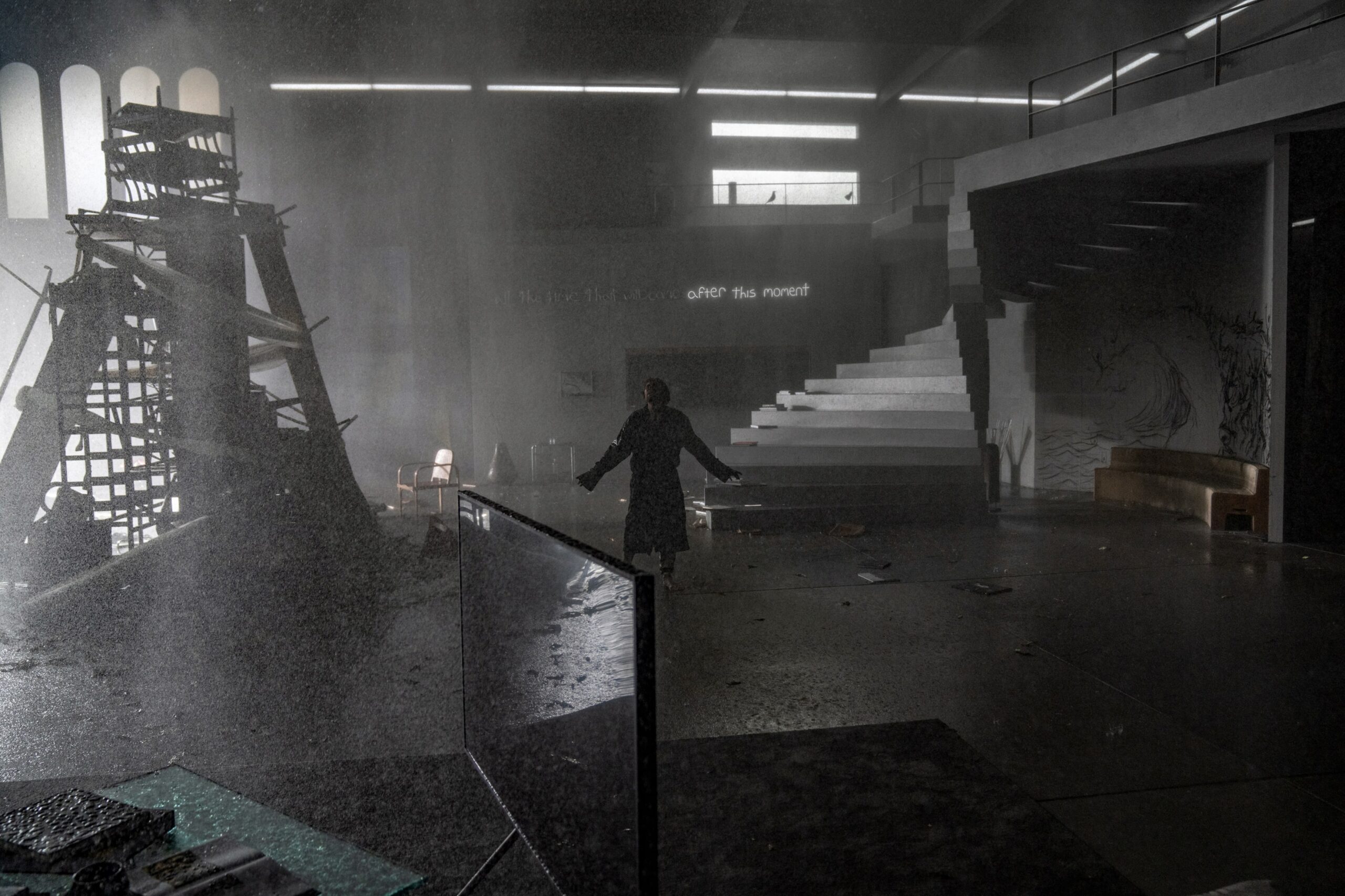
Willem Dafoe stars as Nemo in director Vasilis Katsoupis’s “INSIDE,” a Focus Features release; courtesy of Wolfgang Ennenbach / Focus Features.



